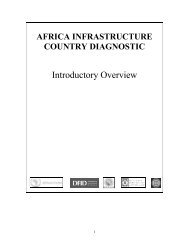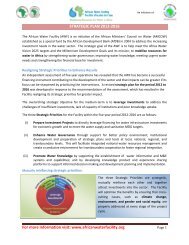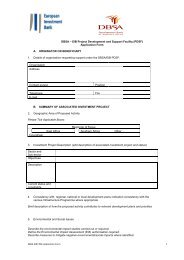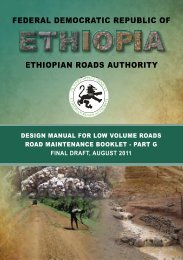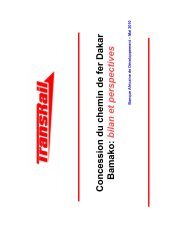Design-Manual-for-Low-Volume-Roads-Part-A
Design-Manual-for-Low-Volume-Roads-Part-A
Design-Manual-for-Low-Volume-Roads-Part-A
Create successful ePaper yourself
Turn your PDF publications into a flip-book with our unique Google optimized e-Paper software.
A - Chapter 1 - 3<br />
Figure A.1.1 shows the definitive classification of roads in Ethiopia based on geometric standards with the<br />
appropriate level of service as defined below Figure A.1.1.<br />
Road Functional Classification<br />
Geometric<br />
Standards<br />
Level of<br />
Service<br />
AADT<br />
DC8<br />
>10,000<br />
FEEDER<br />
COLLECTOR<br />
MAIN ACCESS<br />
LINK<br />
TRUNK<br />
HIGH VOLUME<br />
LOW VOLUME<br />
A<br />
DC7 3,000 - 10,000<br />
DC6<br />
1,000 - 3,000<br />
B<br />
DC5 300 - 1,000<br />
DC4<br />
150 – 300<br />
DC3 C<br />
75 – 150<br />
DC2 25 – 75<br />
DC1<br />
25km). Alternative routes are often long or non-existent and the consequences of<br />
disruption are high. It is prudent there<strong>for</strong>e to adopt design standards that provide an appropriate level<br />
of reliability and service commensurate with the functional characteristics of the road.<br />
While there are exceptions to every rule, low volume roads in Ethiopia can be considered as roads<br />
carrying less than 300vpd and generally of DC4 standard or below and meeting C or D service level<br />
criteria. The majority of roads in Ethiopia carry relatively low levels of traffic, and most carry less than<br />
PART A: DESIGN STANDARD APPROACHES




